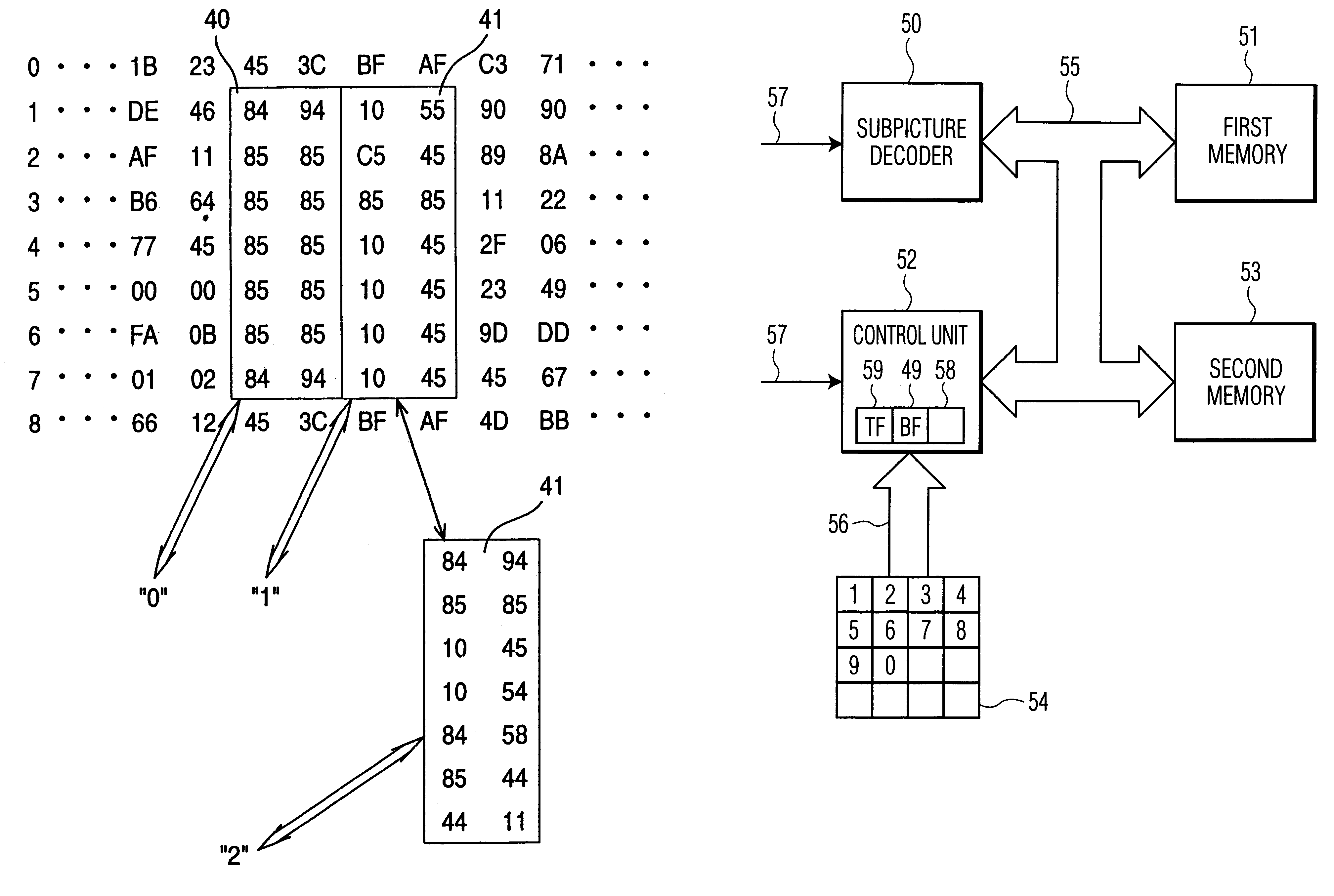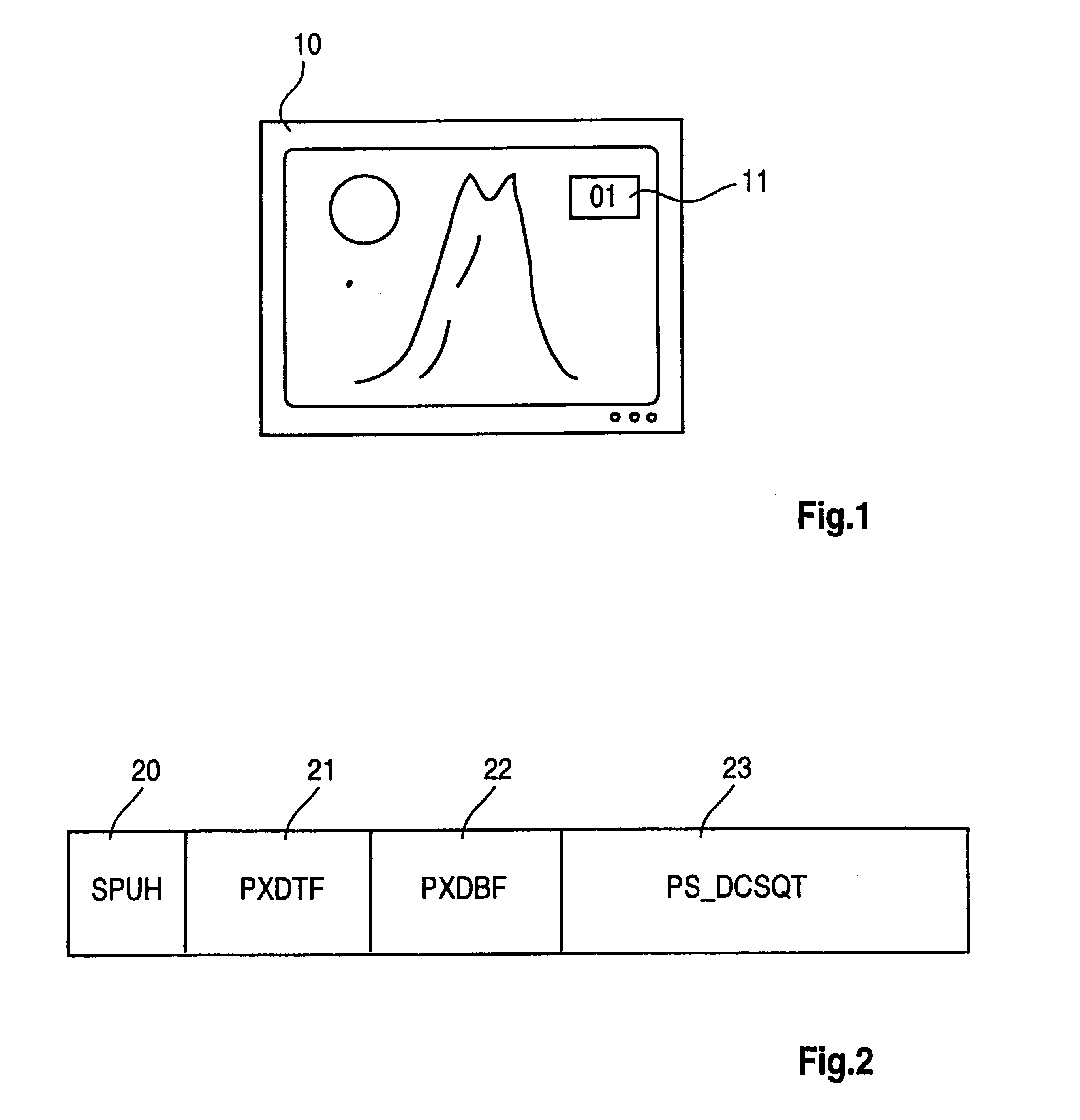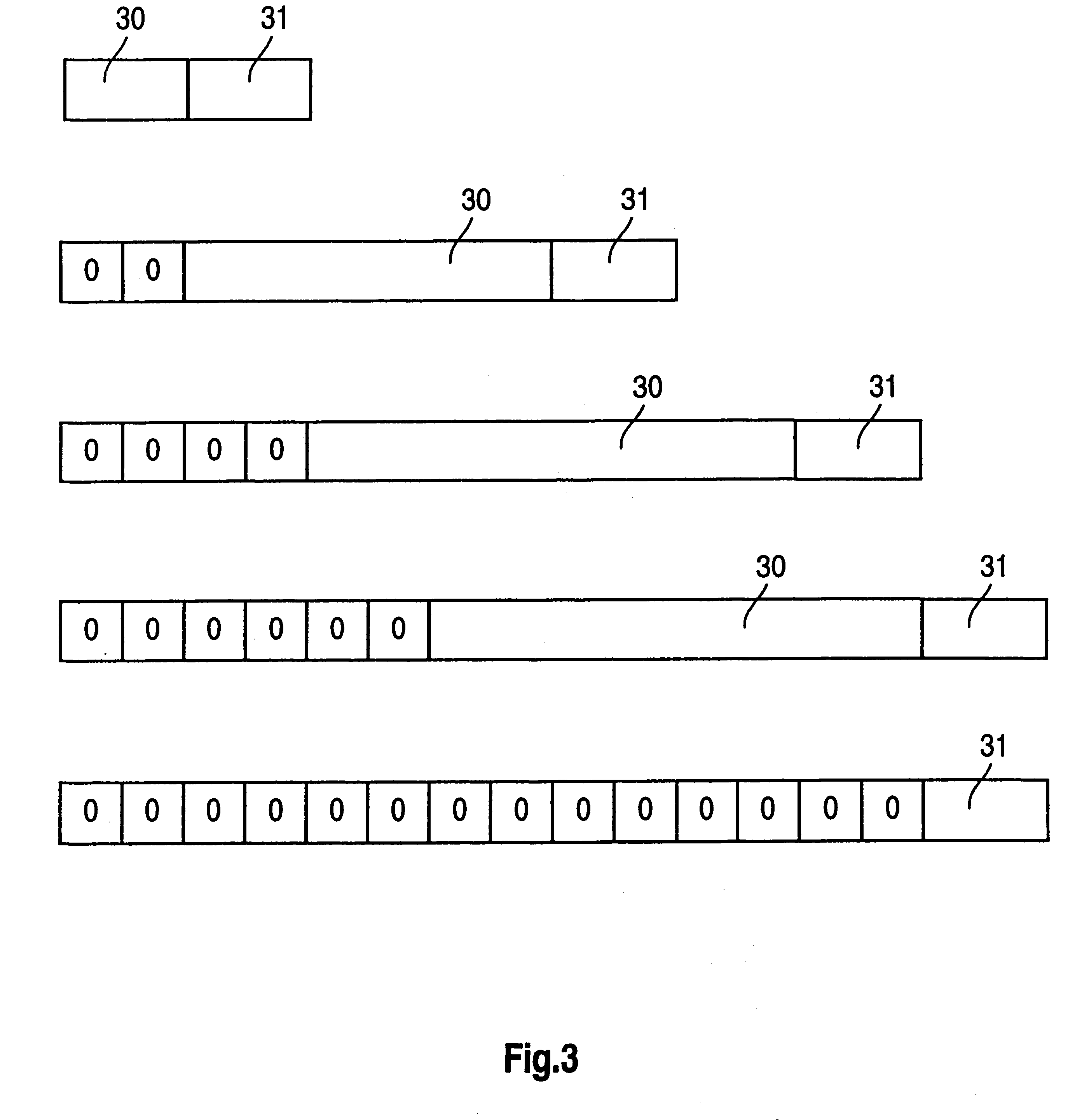Method for replacing parts of a digitally coded picture, and device for carrying out the method
a technology of digitally coded pictures and parts, applied in image data processing, color television, television systems, etc., to achieve the effect of preventing memory access conflicts and incorrect displays
- Summary
- Abstract
- Description
- Claims
- Application Information
AI Technical Summary
Benefits of technology
Problems solved by technology
Method used
Image
Examples
Embodiment Construction
The invention is described using the example of a television receiver having a sub-picture decoding device for displaying or inserting sub-pictures on the screen of the television receiver. Such a television receiver is illustrated in FIG. 1 and designated by the reference symbol 10. A main picture showing a mountain landscape is displayed on the screen of the television receiver. A sub-picture, which is provided with the reference symbol 11, is additionally displayed in the top right corner on the screen of the television receiver. This sub-picture 11 serves to display the current programme location number. The first programme location is illustrated. In the event of a switch-over to a different channel, the associated programme location would be displayed as sub-picture 11.
The sub-picture 11 is displayed with the aid of a sub-picture decoding device, which is explained in more detail below. This sub-picture decoding device largely corresponds to a sub-picture decoding device as di...
PUM
 Login to View More
Login to View More Abstract
Description
Claims
Application Information
 Login to View More
Login to View More - R&D
- Intellectual Property
- Life Sciences
- Materials
- Tech Scout
- Unparalleled Data Quality
- Higher Quality Content
- 60% Fewer Hallucinations
Browse by: Latest US Patents, China's latest patents, Technical Efficacy Thesaurus, Application Domain, Technology Topic, Popular Technical Reports.
© 2025 PatSnap. All rights reserved.Legal|Privacy policy|Modern Slavery Act Transparency Statement|Sitemap|About US| Contact US: help@patsnap.com



